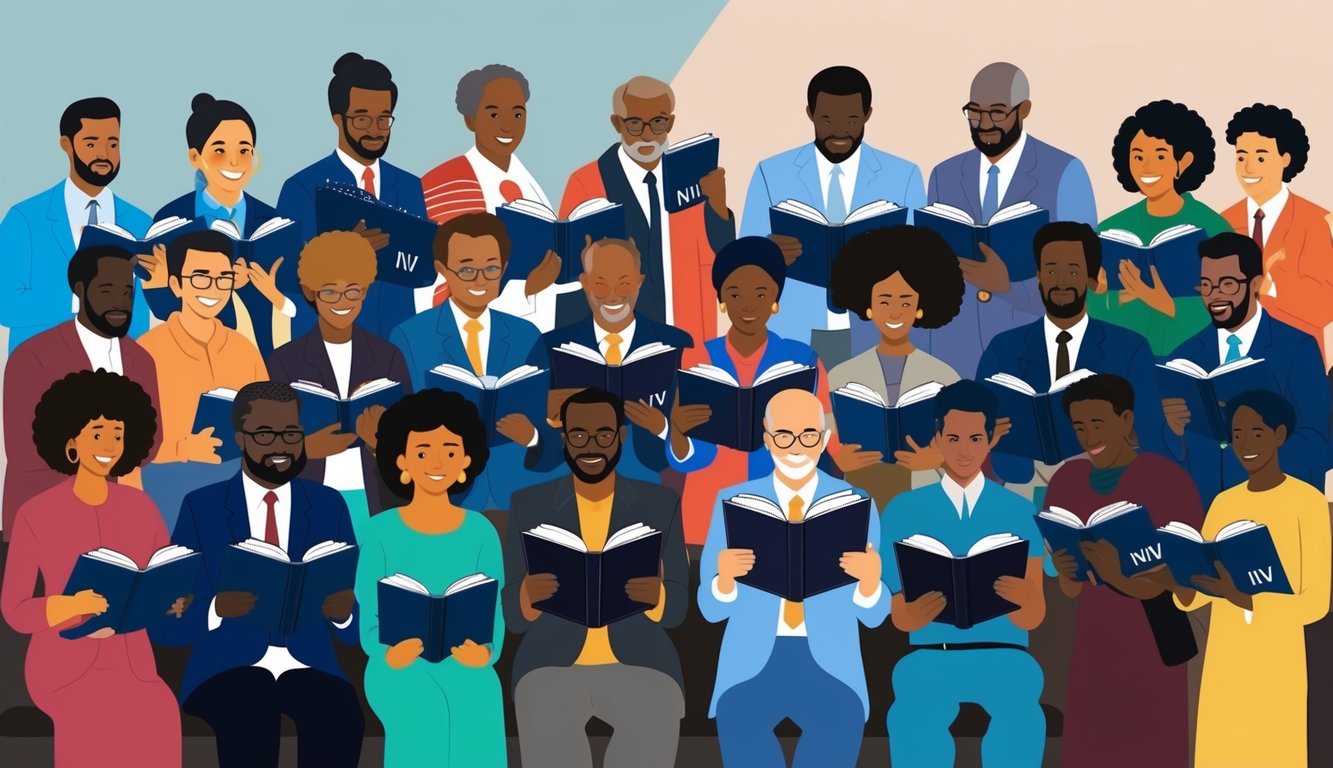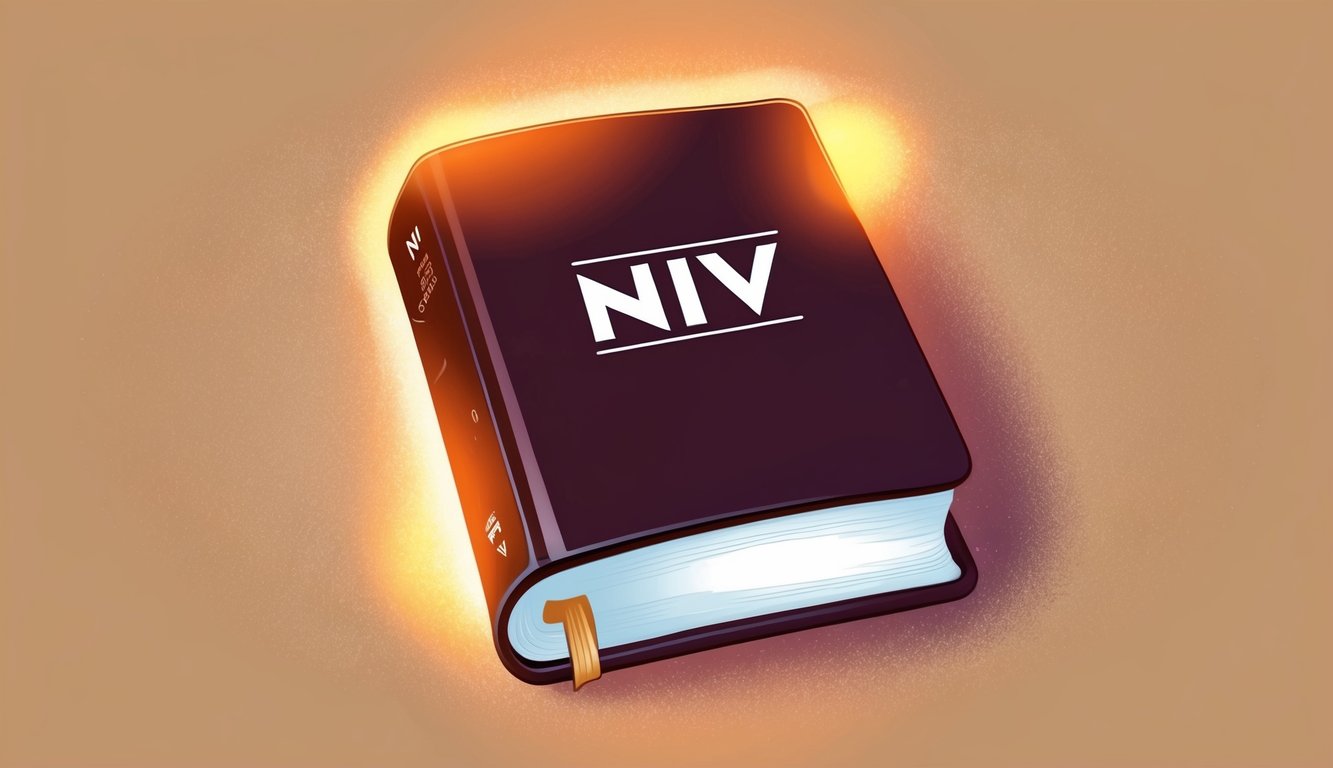Don’t Miss Out On This Unique Astrological Opportunity
Are you tired of spinning your wheels and getting nowhere? Simply put, you’re out of sync: you’re out of alignment with your astral configuration.
But: there’s a kind of map that can help you reclaim your alignment. Think of it as your own personal blueprint to success and happiness: a blueprint that will help you live your most amazing life.
Get started here.
The NIV Bible, or the New International Version, has become one of the most popular contemporary translations of the Bible due to its balance of readability and faithfulness to the original texts.
Introduced in the late 20th century, a diverse team of scholars created this version to make the scriptures accessible to a modern audience.
Many people appreciate the NIV Bible for its clear and understandable language, which reflects a commitment to conveying the original meaning without unnecessary complexity.
Understanding the translation philosophy of the NIV can enhance your appreciation for its approach.
It uses a thought-for-thought, or dynamic equivalence, methodology.
This means the translators aimed to communicate the ideas behind the original texts accurately without sticking too rigidly to the word-for-word format.
This makes the NIV Bible particularly useful for those who want a text that’s approachable yet still grounded in careful scholarship.
Moreover, the cultural impact of the NIV Bible is significant.
It is widely used across different cultures, reflecting its broad accessibility and appeal.
Whether you’re conducting a personal study or participating in group discussions, the NIV continues to be a pivotal resource for spiritual growth and exploration.
Key Takeaways
- The NIV Bible balances readability and accuracy.
- It uses a dynamic equivalence translation method.
- It is culturally impactful and widely accessible.
The History of the NIV Bible

The New International Version (NIV) Bible was created to provide a contemporary English translation accessible for modern readers.
Influenced by various organizations, it involved cooperation across denominations and countries.
Origins and Development
In the mid-20th century, Howard Long, a businessman, was driven to create a Bible version that anyone could easily read and understand.
His vision led to the formation of the Committee on Bible Translation (CBT), which was tasked with developing a new translation.
This effort started in 1965 under the sponsorship of the New York Bible Society, now known as Biblica, Inc. The Committee consisted of scholars from various backgrounds who worked together to make the text both accurate and readable.
The translation process was marked by a rigorous method of drafting, revising, and refining the text.
The New Testament was published in 1973, followed by the entire NIV Bible in 1978.
It aimed to balance readability with original meaning, distinguishing it from earlier versions like the King James Version.
The Role of Biblica, Inc.
Biblica, Inc., formerly the International Bible Society, played a pivotal role in the NIV’s development.
Initially known as the New York Bible Society, Biblica provided the necessary financial and administrative support for the translation.
Biblica was instrumental in coordinating the translation efforts and maintaining the integrity of the work.
Their mission was to ensure that the Bible reached as many people as possible in a form they could understand.
By funding and supporting the translation, Biblica helped to make the NIV one of the most widely read translations today.
They continue to distribute and promote the NIV across the globe.
Collaboration with Zondervan and Hodder & Stoughton
The publication and distribution of the NIV Bible were largely facilitated through partnerships with Zondervan and Hodder & Stoughton.
Zondervan, based in the United States, took charge of publishing the NIV Bible in North America.
They played a key role in marketing the translation, helping it gain popularity among readers.
Meanwhile, Hodder & Stoughton managed the UK and Commonwealth distribution, extending the reach of the NIV Bible to international audiences.
Their collaboration ensured the NIV’s availability worldwide, making it a staple in both personal and communal settings.
These partnerships have helped maintain the NIV’s status as a leading Bible translation for decades.
Translation Philosophy and Methodology
When looking at the translation of the NIV Bible, you notice a balance between maintaining accuracy to the original texts and making the content understandable for modern readers.
Various manuscripts in Hebrew, Aramaic, and Greek are utilized in this process.
Translation teams, including the Committee on Bible Translation, play a significant role in achieving these goals.
Balance Between Accuracy and Readability
In translating the NIV Bible, it’s crucial to keep both accuracy and readability in mind.
The goal is to make the text understandable and accessible, while still holding true to the original meanings.
Scholars have worked to preserve the essence of the biblical texts while using modern English that resonates with today’s readers.
Decisions are made to capture the exact meaning without losing the impact of the message.
Scholars involved in translation strive for a balance that helps readers engage with the content without becoming bogged down by outdated phrasing.
This involves both linguistic skill and a deep appreciation for biblical scholarship.
Use of Manuscripts in Hebrew, Aramaic, and Greek
The use of ancient manuscripts is fundamental in translating the NIV Bible.
These texts in Hebrew, Aramaic, and Greek form the backbone of the translation process.
Translators examine these original writings to create an accurate English version.
Attention is given to the historical and cultural contexts of these manuscripts.
This ensures that nuances are not lost in translation.
Experts in these languages compare various versions to determine the most authentic wording.
The Work of Translation Teams
Translation teams, such as the Committee on Bible Translation, work rigorously on the NIV Bible.
They employ both individual expertise and collaborative efforts to shape the text.
Their task is to blend linguistic precision with theological understanding.
Working on a new version involves extensive reviews and revisions.
Teams assess word choices, sentence structures, and English usage, ensuring coherence throughout the text.
Collaboration among scholars, including theologians and linguists, is key in developing a text that is both true to scripture and suitable for contemporary audiences.
These teams endeavor to produce a version that both respects the original text and speaks to modern readers.
Cultural Impact and Accessibility

The New International Version (NIV) Bible has had a significant influence on both culture and accessibility to Scripture.
Its popularity has grown across various communities, with churches and ministries adopting it widely.
Technological advances have also made the NIV more accessible in digital formats, aiding in daily life and spiritual growth.
The NIV’s Reception and Popularity
The NIV Bible is recognized as one of the most popular and best-selling versions of the Holy Bible.
A focus on accuracy and clarity of meaning has contributed to its strong reception.
Many readers find that its language resonates well in daily life and offers a clear understanding of verses.
Biblical scholars and pastors appreciate its balance of readability and faithfulness to original texts.
HarperCollins Christian Publishing, which produces the NIV, has played a role in ensuring it remains easily accessible and trusted by congregations.
Its widespread acceptance demonstrates its power to change lives by bringing clarity to complex Scriptural concepts.
Many believers find that using a journaling Bible for spiritual growth helps them engage more deeply with the text, allowing for personal reflections and insights.
This interactive approach fosters a stronger connection to Scripture, making it more than just a reading experience.
By combining accessibility with study tools, the NIV continues to support both new and seasoned readers in their faith journeys.
The NIV in Churches and Ministries
In churches and ministries, the NIV Bible is often the preferred choice for sermons and study sessions.
Pastors and ministry leaders find its translation helpful when communicating the messages of God and addressing topics of sin and light.
The NIV supports a range of study articles and engagement tools, offering structured reading plans and regular Bible reading opportunities.
Ministries incorporate these in their programs to provide free resources and enhance daily Scripture verse reading plans.
With its role in education, the NIV assists members in producing spiritual fruit and developing a deeper understanding of Scriptures.
Advancements in Digital Accessibility
Digital technology has significantly enhanced the accessibility of NIV Bibles.
With the availability of online devotionals, email subscriptions, and downloadable reading plans, it’s easier than ever to engage with Scripture.
Platforms offer study tools and articles that help with engaging with and understanding the Bible’s text in daily contexts.
Free online resources have expanded the reach of the NIV, making it easier for individuals worldwide to access the Scriptures.
This increase in accessibility aids churches and ministries in broadening their impact, allowing more people to discover the power and depth of biblical teachings in their daily lives.
Copyright and Publication Information

The NIV Bible has distinct copyright and permission guidelines, as well as updates that impact its use and distribution.
Knowing these facts is crucial if you intend to use or publish any part of the NIV text.
Copyright and Permissions
The New International Version (NIV) Bible is protected by copyright laws, which are primarily managed by Biblica.
This ensures that the text remains consistent and unchanged across translations.
When quoting the NIV Bible, it is essential to include proper notices that mention both the version and the copyright holder.
For those who wish to publish or distribute the NIV text, obtaining permission is necessary.
Permission requests are typically handled by HarperCollins Christian Publishing.
By following these guidelines, you ensure that you are respecting the legal rights associated with the NIV Bible.
2011 Update and Its Importance
In 2011, the NIV Bible underwent a significant revision.
This update aimed to modernize the language while maintaining accuracy in translation.
It involved scholars and experts who spent years refining the text to better reflect contemporary understanding and linguistics.
Many churches and groups have adopted this newer version for its clarity and readability.
If you are using or distributing the NIV, it’s crucial to ensure that you are working with the most current version.
The 2011 update reflects ongoing efforts to keep the Bible accessible and relevant for today’s readers.
Distribution and Publishing Partners
The distribution of the NIV Bible is handled by several partners, primarily based in Chicago and Palos Heights, Illinois.
One of the primary partners is HarperCollins Christian Publishing, which manages a wide network to ensure that the Bible reaches readers globally.
These partnerships allow the NIV to be available in various formats, including print and digital.
Understanding these partnerships helps you identify where and how you can access the most reliable versions of the NIV.
By working with these authorized distributors, you can trust in the authenticity and quality of the text.
Frequently Asked Questions

There are several ways to access the NIV Bible for free, including online reading options and mobile apps.
It’s also important to note the differences in translation and usage of the NIV Bible compared to others like the King James Version (KJV).
How can I download the NIV Bible for free?
You can download the NIV Bible for free through various websites that offer digital versions.
Some religious organizations and online bookstores provide free PDF downloads.
Ensure the source follows copyright laws and be cautious of legality.
Are there any free NIV Bible apps for mobile devices?
Yes, there are multiple free NIV Bible apps available on both iOS and Android platforms.
Apps such as YouVersion, Bible Gateway, and others often include features like reading plans, audio Bibles, and study tools.
What are the key differences between the NIV and KJV versions of the Bible?
The NIV uses modern language and aims for clarity and readability.
In contrast, the King James Version uses older, more traditional English.
The NIV often makes use of more recent manuscripts and translations to ensure accuracy in conveying the original texts.
In terms of accuracy, how does the NIV Bible compare to other translations?
The NIV is known for balancing readability with accuracy, offering a clear interpretation of the original texts.
It’s constantly reviewed and updated by scholars to incorporate the latest biblical research, making it a reliable choice for many readers.
Can I read the NIV Bible online at no cost?
Yes, you can read the NIV Bible online for free through platforms like Bible Gateway and other religious websites.
These websites usually provide both the full text and additional study resources to enhance your reading experience.
Which religious denominations commonly use the NIV Bible?
The NIV Bible is widely used among Protestant denominations.
This includes Evangelicals, Baptists, and Methodists.
They favor it for its accessible language and reliable translation, which appeals to both individual readers and church groups.



